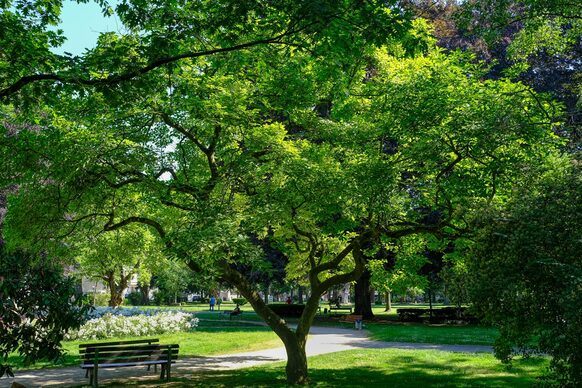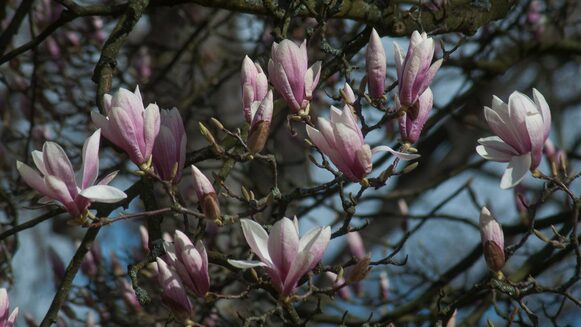
- Magnolia x soulangeana "Nigra" (also: Magnolia liliiflora "Nigra")
- Japan
Genus
Magnolia: The name refers to the French botanist Pierre Magnol (1638-1715). He was director of the botanical garden in Montpellier.
Deciduous or evergreen trees or shrubs in parks, gardens and in the landscape with a great design effect. With its attractive flowers, it is the most conspicuous ornamental shrub from medium-sized trees to shrub-like shrubs in the large plant genus with around 200 species. Magnolias are native to two large areas in East Asia and North America.
In terms of evolutionary history, it is the origin of the angiosperms and thus the ancestor of our flowering plants. The leaves are large, simple, of medium length, elongated oval, leaf buds hairy.
The flowers are bisexual white-pink, often star-shaped or tulip-like and often only bloom after five years.
The fruits are red or pink-red, the seed capsules are free, shiny red seeds after opening.
Information on the species

Magnolia x soulangeana "Nigra": The tulip magnolia was introduced to England from Japan in 1861. Magnolia x soulangeana originated from a cross between Magnolia denudata x Magnolia liliflora.
Soulangeana is named after Etienne Soulange-Bodin (1774-1846). It was bred in 1826 at the Royal Horticultural Institute in Fromont (France) near Ris, close to Paris.
Today, the tulip magnolia is the most widely planted magnolia species in Europe and is therefore often referred to simply as magnolia.
Growth: Large shrub or small, short-stemmed tree with a rounded, spreading crown that is lowered to the ground, reaching a final height and width of up to ten meters
Leaves: deciduous, obovate to broadly elliptical up to 15 centimetres long, light to medium green, autumn color: light yellow to light brown
Flowers: Before the leaves emerge, large, tulip-shaped single flowers with a white base color and pink-purple tints in unbelievable abundance on old trees
Fruits: cylindrical
Buds: upright candles up to seven centimetres long with velvety hairs
Characteristics: In the event of late frosts from March to April/May, the flowers are very susceptible to frost and the flowering splendor is over